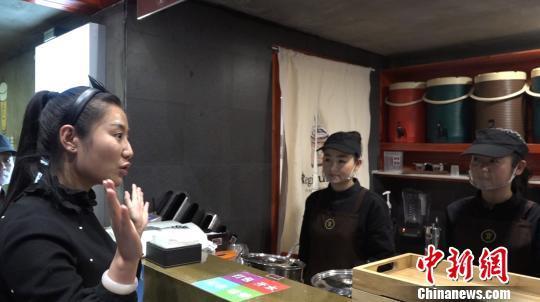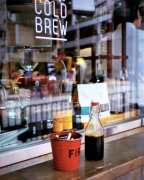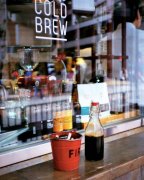Cuban Crystal Mountain Coffee Flavor description Information planting History of characteristic Variety producing areas

For professional baristas, please follow the coffee workshop (Wechat official account cafe_style)
Cuban Crystal Mountain Coffee is a typical island bean, taste clean, delicate, slightly sour but not exciting taste, with a special sweet flavor, very charming.
With fertile land, humid climate and abundant Rain Water, Cuba can be called a natural treasure land for coffee cultivation. The suitable natural conditions provide a favorable natural environment for the growth of coffee trees. Coffee is well cultivated and developed here, and the best coffee growing area in Cuba is located in the Central Mountains. Because this area not only grows coffee, but also produces quartz, crystal and other precious minerals, it is also known as Crystal Mountain.
Crystal Mountain is geographically adjacent to the Blue Mountains of Jamaica, with similar climatic conditions and flavor similar to Blue Mountain Coffee, comparable to the Blue Mountains of Jamaica. Also known by the outside world as "the Blue Mountains of Cuba".
Crystal Mountain Coffee is synonymous with top Cuban coffee. Crystal Mountain Coffee is characterized by its large granules and bright green beans. Its flavor and taste features: full particles, uniform taste, with tobacco flavor. Crystal Mountain Coffee beans are typical island beans with a clean and delicate taste, slightly sour taste, not strong but long-lasting, with sweet fruit aromas.
The "noble and elegant princess" in Cuban Crystal Mountain Coffee Coffee
And the most authentic Crystal Mountain Coffee is Cuba's famous Cubita. It slightly contains wine-like bitterness and a touch of sweetness, and even a hint of tobacco, meticulous and smooth, fresh and elegant, almost perfect. It is known as the "noble and elegant princess" in coffee. The general taste of coffee is as strong as heavy metal music, while the taste of Cubita is as delicate and balanced as the softness of country minor. It will take you out of the restless urban hustle and bustle and come back to the quiet countryside to reflect the casual and comfortable side of life.
Crystal Mountain Coffee is the top representative of Cuban coffee, while Cubita is the top representative of Crystal Mountain Coffee. Cubita Amber is the coffee for the celebration of the 50th anniversary of the establishment of diplomatic relations between China and Cuba, and the coffee for the Shanghai World Expo-Cuba Pavilion. Noble women and elegant men are always infatuated. Cubita is the same, a shallow taste, will be deeply attracted by its taste, and intoxicated among them, people can not extricate themselves.
Cuba, located in the Caribbean, is an island country under communist rule, and its capital is Havana. Cuba is famous not only for its snow-white beaches and cigar tobacco, but also for its excellent coffee. Cuba has a long history of growing coffee, and Jos é Antonio Gelabert introduced the first coffee factory to Cuba in 1748. In 1791, when slavery was abolished during the Haitian revolution, French colonists fled to Cuba, bringing better methods of coffee production to Cuba. Before the era of Castro, Cuba's coffee industry boomed, and coffee beans were once Cuba's number one export, with more "sugar" than life's necessities. In the mid-1950s, Cuba exported more than 20000 metric tons (22046 short tons) of coffee beans a year, all of which were sold at high prices, with most of the coffee exported to Europe, especially the Netherlands and Germany. In the late 19th century, the price of local coffee plummeted because of government policies and the chaos of the international political situation, so farmers turned to plant other crops.
At present, most coffee farms in Cuba are state-owned, but in 1990 the government released part of the land for coffee farmers to grow, but coffee production is still less than in previous years, Crystal Mountain production is very small, and coastal areas are hit by hurricanes from time to time, resulting in a shortage of supplies. Cuban coffee is mainly sold to Japan and France, while Japan almost monopolizes the highest quality Crystal Mountain Crystal Mountain, so it is rare to get high-quality Cuban coffee.
The planting area of Cuban coffee is divided into three parts, which are planted on the slopes and valleys above sea level from 1000 meters to 2000 meters above sea level, with the largest proportion of Santiago de Cuba and Granma in the east accounting for 70% of the country, followed by the central villa Clara and Sancti Spiritus accounting for 20%, and the western Pinar del Rio accounting for 10%. These areas provide a quite comfortable growing environment for coffee beans, with an average temperature of 21 degrees in winter and 25 degrees in summer. The rainfall is moderate, the humidity is evenly distributed all the year round, and the soil is deep and fertile. All planted Arabica (Arabica) varieties, to Tibica (Typica). In 2000, the United Nations Educational, Scientific and Cultural Organization (UNESCO) listed two coffee producing areas, Santiago and Guantanamo, as World Heritage sites.
Where is Crystal Mountain?
"Crystal Mountain" is not the name of Cuba's producing area. "Crystal Mountain" is the highest grade of coffee in the Cuban official coffee association classification system. The Cuban Coffee Association classifies coffee beans into nine grades according to particle size and flavor, with the highest being Crystal Mountain, Extra turquino, Turquino, Altura, Montana, Cumbre, Serrano superior, Serrano Corriente and Caracolillo.
Important Notice :
前街咖啡 FrontStreet Coffee has moved to new addredd:
FrontStreet Coffee Address: 315,Donghua East Road,GuangZhou
Tel:020 38364473
- Prev

Does Cuban Crystal Mountain Coffee taste good Coffee Bean Flavor description production area characteristic treatment
Exchange of professional baristas Please follow the coffee workshop (Wechat official account cafe_style) the noble and elegant princess in Cuban Crystal Mountain Coffee and the most pure Crystal Mountain Coffee is the famous local Cubita in Cuba. It slightly contains wine-like bitterness and a touch of sweetness, and even a hint of tobacco, meticulous and smooth, fresh and elegant, almost perfect. Personal coffee
- Next

Introduction to El Salvador Coffee beans how to describe the Flavor of planting History
For the exchange of professional baristas, please pay attention to the coffee workshop (Wechat official account cafe_style) El Salvador's famous Apaneca-Llamatepec region coffee is supported by international cooperation, with the goal of strengthening the competitiveness of the coffee industry in Central America and the Caribbean, providing protection of the value and positioning of its products through awareness of the designated place and origin of coffee.
Related
- Detailed explanation of Jadeite planting Land in Panamanian Jadeite Manor introduction to the grading system of Jadeite competitive bidding, Red bid, Green bid and Rose Summer
- Story of Coffee planting in Brenka region of Costa Rica Stonehenge Manor anaerobic heavy honey treatment of flavor mouth
- What's on the barrel of Blue Mountain Coffee beans?
- Can American coffee also pull flowers? How to use hot American style to pull out a good-looking pattern?
- Can you make a cold extract with coffee beans? What is the right proportion for cold-extracted coffee formula?
- Indonesian PWN Gold Mandrine Coffee Origin Features Flavor How to Chong? Mandolin coffee is American.
- A brief introduction to the flavor characteristics of Brazilian yellow bourbon coffee beans
- What is the effect of different water quality on the flavor of cold-extracted coffee? What kind of water is best for brewing coffee?
- Why do you think of Rose Summer whenever you mention Panamanian coffee?
- Introduction to the characteristics of authentic blue mountain coffee bean producing areas? What is the CIB Coffee Authority in Jamaica?

